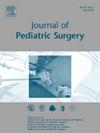用生理盐水插管评估泄殖腔异常患者的胆管通畅:一项回顾性队列研究。
IF 2.5
2区 医学
Q1 PEDIATRICS
引用次数: 0
摘要
目的:36-41%的女性泄殖腔有月经梗阻的经历,这可能导致显著的发病率。目前尚无确定青春期前本文章由计算机程序翻译,如有差异,请以英文原文为准。
Assessment of Müllerian Patency in Patients With Cloacal Anomaly Using Saline Pertubation: A Retrospective Cohort Study
Purpose
36–41 % of females with cloaca experience menstrual obstruction, which can result in significant morbidity. No established evaluation exists to determine the patency of the pre-pubertal Müllerian system. Saline pertubation (SP)-- cannulating the fallopian tubes and injecting sterile saline-- can be performed during other indicated abdominal procedures. This study sought to assess the sensitivity and specificity of SP in predicting future patency of the Müllerian system among females with cloaca.
Methods
A retrospective review of patients with cloaca at a single institution from 2005 to 2023 was conducted (IRB#2023–0617). Menstrual patency was defined by the absence of obstruction by imaging or symptoms within 2 years of menarche, or between ages 9–13 years in patients with amenorrhea.
Results
255 patients with cloaca were reviewed. In those who met inclusion criteria by age or pubertal status, 79 Müllerian structures underwent SP in 52 patients. 75 structures were found to be patent, and four were found to be obstructed by SP. Four structures with patency on SP later developed obstruction. One structure without patency by SP had subsequent patency. SP was found to have a sensitivity of 95.9 % (95 % CI of 88.6–99.1 %) and specificity of 20 % (95 % CI of 0.5 %–71.6 %) for menstrual patency. One patient, patent on SP, developed a tuboovarian abscess 10 years after intervention and two patients patent on SP developed hydrosalpinx 8–10 years later. In 150 cloaca patients who did not undergo SP, three patients developed tuboovarian abscesses, and 22.8 % (29/127) of unobstructed patients developed hydrosalpinx.
Conclusions
SP among individuals with cloaca has a high sensitivity to identify those who are low risk for obstruction.
Study Type
Retrospective Cohort Study.
Level of Evidence
Level 3.
求助全文
通过发布文献求助,成功后即可免费获取论文全文。
去求助
来源期刊
CiteScore
1.10
自引率
12.50%
发文量
569
审稿时长
38 days
期刊介绍:
The journal presents original contributions as well as a complete international abstracts section and other special departments to provide the most current source of information and references in pediatric surgery. The journal is based on the need to improve the surgical care of infants and children, not only through advances in physiology, pathology and surgical techniques, but also by attention to the unique emotional and physical needs of the young patient.

 求助内容:
求助内容: 应助结果提醒方式:
应助结果提醒方式:


